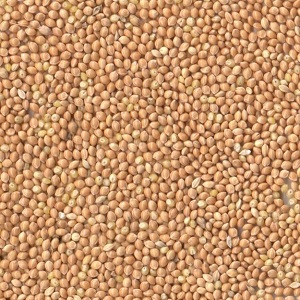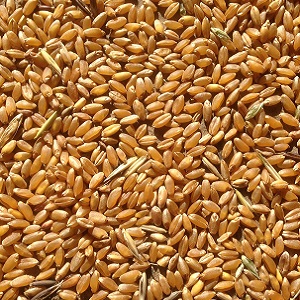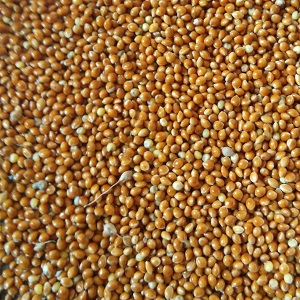Description
Millets are a group of highly variable small-seeded grasses, widely grown around the world as cereal crops or grains for fodder and human food. Millets are important crops in the semiarid tropics of Asia and Africa (especially in India, Mali, Nigeria, and Niger), with 97% of millet production in developing countries. The crop is favored due to its productivity and short growing season under dry, high-temperature conditions.
Millet is hard-hulled and should be ground before being fed to livestock. It should be finely ground: coarse grinding leads to the hard hull splintering into sharp fibres, which can result in internal irritation. It can be used in ruminant, poultry and pig rations without adversely affecting feed efficiency or weight gain.
Ruminants
Pearl millet grain replaced up to 10% of corn silage or maize grain in dairy cow and mature goat diets with no deleterious effect on DM intake (Ribeiro et al., 2004; Terrill et al., 1998). In Brazil, pearl millet grain replaced up to 67% of whole maize plant without affecting milk performance (França et al., 2004).
Pigs
Pigs can be fed up to 60-75% pearl millet in maize/soybean-based diets (Calder, 1960; Moreira et al., 2007; Bastos et al., 2006). However, amino acid supplementation may be required during the finishing stage (Oliveira et al., 2007). One advantage of pearl millet over maize grain in pig feeding is that it gives firmer and whiter fat (Calder, 1960).
Poultry
Broilers
Pearl millet is a good alternative source of energy in broilers up to 7 weeks old. Broilers can be fed pearl millet/soybean-based diets and it can replace maize in a maize/soybean-based diet. The proposed replacement rates range from 10% to 100%, with most sources suggesting replacing more than 50% of the maize (Udeybir et al., 2009; Udeybir et al., 2007; Choudhary et al., 2005; Davis et al., 2003; Raju et al., 2003). When compared to maize or sorghum, pearl millet was found to have equal or higher nutritive value (Vasan et al., 2008; Evans et al., 2005; Healy et al., 1991), which is confirmed by a meta-analysis of literature data (Batonon et al., 2015). Reconstitution with or without enzymes is interesting as it enhances metabolizable energy and N retention (Manwar et al., 2009; Manwar et al., 2008). Grinding pearl millet has resulted in inconclusive and contradictory results (Vasan et al., 2008; Vasan et al., 2009).
Laying hens
Laying hens can be fed on pearl millet as a maize replacer in soybean/maize-based diets up to 15% of the diet for unground pearl millet (Garcia et al., 2006). In order to guarantee egg production, yolk colour and poly-unsaturated fatty-acids, pearl millet-based rations can be fed to laying hens with flaxseed (6% of the diet) (Amini et al., 2008) or soybean oil supplementation (Muramatsu et al., 2005).
Quails
Laying Japanese quails can be fed pearl millet as a 75% replacer of maize (Seema Agarwal et al., 2006), but pigment supplementation is needed (Leandro et al., 1999).
Ducks
In Pekin ducks, pearl millet can fully replace maize and preserve animal performances (Adeola et al., 1996; Adeola et al., 1994).
Rabbits
Pearl millet grain has a good nutritive value for rabbits (Rajendra et al., 2000) and can replace 100% of maize in their diets (Furlan et al., 2003).
Fish
Pearl millet has been successfully tested in several fish species. It is efficiently used by tilapia (Oreochromis niloticus) and can be included as 10% of the diet during sex-reversal (Boscolo et al., 2002; Meurer et al., 2004). It was also recommended to include it at 20% of the diet of Leporinus macrocephalus in order to minimize feed costs (Nagae et al., 2002). Pearl millet also completely replaced maize in tambacu diets (hybrid Colossoma macropomum female x Piaractus mesopotamicus male) (Silva et al., 2000).





Reviews
There are no reviews yet.